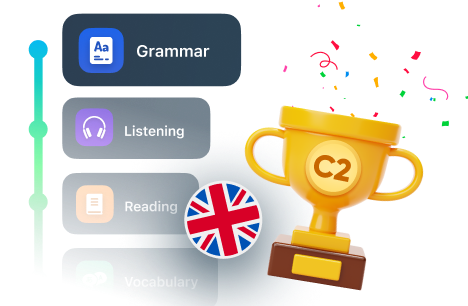
Connectives—The Glue to Effective Speaking And Writing Skills
When we mention connectives, we are talking about words that are used in writing and speaking to link sentences and ideas to achieve an understanding of what the writer or the author is trying to convey.
After having taught more than 100 IELTS lessons, the one common area of struggle that most IELTS students indicate to me is their confidence to speak. Even now, when I encounter new students preparing for their IELTs, again, they tell me their area of weakness isn’t the writing, reading, or listening component of the IELTS but the speaking. Once we identify the problem, I often ask them which part of the speaking component they struggle with the most, to which they answer, lack of confidence. To test this, I often give them a topic to speak about just to ascertain and get a better understanding of their struggle areas, and what I often find is that most students don’t use connectives or even understand how to use them.
What are connectives?
So, when we mention connectives, we are talking about words that are used in writing and speaking to link sentences and ideas to achieve an understanding of what the writer or the author is trying to convey. Moreover, they show relationships between different ideas, additions, causes, and effects. Connectives come in different forms, namely adverbs, prepositions, conjunctions, and phrasal nouns, and they are used frequently in both spoken and written English. They are used to create a structured and grammatically correct sentence and facilitate the flow of words and ideas from one form to another, simultaneously eliminating awkwardness and confusion. When we employ the use of connectives, our speeches and texts improve dramatically.
Three main categories of connectives
Conjunctions
A student asked me what conjunctions are and why they are important. The simple answer is—conjunction is a word that joins two or more simple sentences to make a complex and grammatically correct compound sentence. A conjunction has one main important task, and that is to connect (conjoin) parts of a sentence.
Stella and Ravih are cousins.
He drove fast but still missed his flight.
While I was in the hospital, I felt the need to go and visit other patients in order to witness how they were doing.
Instead of taking the train, he decided to drive down from Cape Town to Johannesburg because he wanted to experience a road trip with his family and friends.
Prepositions
While prepositions are commonly used, the one feature I noticed was that most students didn’t know what prepositions were and why they were using them in the first place. As a result, their speeches were often rife with inaccuracies. But before we use them, let’s try and understand what they are and why we use them. Prepositions are words that tell us the place, time, position, and special relationships and introduce an object. They are often words used before a noun, pronoun, a noun phrase.
She stood behind me because she was afraid of the dog approaching us. (Indicating position)
He was such a skillful pilot that he managed to maneuver the plane below the bridge. (Direction)
Whenever she gets into bed, she likes reading before sleeping (referring to position)
I managed to finally arrive at my destination after getting lost for more than two hours (referring to a place)/ I got to work at 8 am this morning (referring to a point in time)
Besides their shaky relationship, they managed to shake hands and maintain their friendship.
The building is located in front of the Mall (referring to special relationships)
Adverbs
Adverbs can modify verbs, adjectives, and clauses: then, next, soon, yesterday, here, eventually, later, now frequently, therefore, etc.
Yesterday, I had a runny stomach because I might have eaten something that was off.
He eventually showed up after having us wait for two hours.
I frequently go to the store to get my groceries.
I am waiting for my brother because we are going later to the bar.
While speaking and writing are two different tasks of the English language, it’s not a secret that both require that the author convey a message that the reader and the listener can understand. Without the use of connectives, that goal can never be achieved, which is why it’s important that students or authors understand different use and their importance. In any language, understanding is the primary focus of communication, and using the right grammatical tools to achieve this is absolutely important.


















